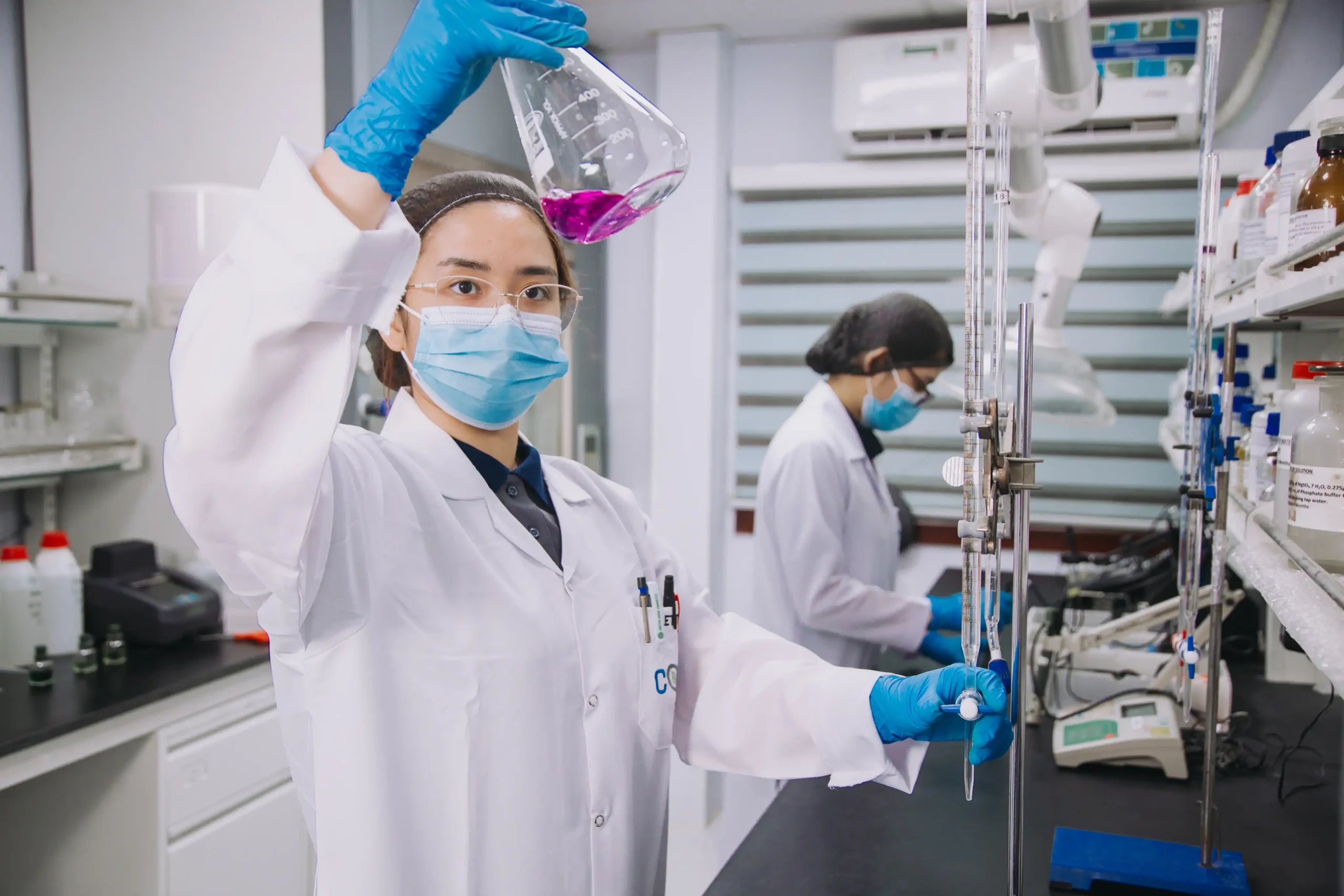
wet chemistry
Wet chemistry is a form of analytical chemistry that uses classical methods, such as observation to analyze materials. It is called wet chemistry since most of the materials are analyzed in the liquid phase. Wet chemistry is also called bench chemistry since many tests are performed at laboratory benches. Wet chemistry is now rarely done manually except for demonstration purposes due to the technological advancements in the field of chemistry.
Wet chemistry commonly uses laboratory glassware’s such as beakers and graduated cylinders to prevent materials from being contaminated or interfered with by unintended sources. Gasoline, Bunsen Burners and Crucibles may also be used to evaporate and isolate substances in their dry forms. Wet chemistry is not performed with any advanced instruments since most of the materials are automatically scan substances. However, simple instruments such as scales are used to measure the weight of a substance before and after a change occurs.
Methods
Qualitative Methods
Qualitative methods use changes in information that cannot be quantified to detect a change. This includes a change in color, smell, texture, etc.
Chemical Tests
Chemical tests use reagents to indicate the presence of a specific chemical in an unknown solution. The reagents cause a unique reaction based on the chemical it reacts with, allowing one to know what chemical is in the solution. For example, in Heller’s test, strong acids are added to a test tube containing proteins. A cloudy ring forms where the substances meet, indicating that the acids are denaturing the proteins. The cloud is a sign that proteins are present in the liquid. This method is used to detect proteins in a person’s urine.
Flame Test
The flame test is a well-known version of the chemical test. It is used exclusively on metallic ions. When the metal powder is burned, it emits colors specific to the metal. For example, Calcium (Ca) burns orange and Copper (Cu) burns blue. These color emissions are used to produce bright colors in fireworks.
Quantitative Methods
Quantitative methods use information that can be measured and quantified to indicate a change. This information can include changes in volume, concentration, weight, etc.
Gravimetric Analysis
Gravimetric analysis measures the weight or concentration of a solid that has either formed as a precipitate or dissolved in a liquid. The mass of the liquid is recorded before the reaction. For precipitates, a reagent is added until precipitation ceases. The precipitate is then dried and weighed to determine the concentration of the chemicals in the liquid. For dissolved substances, the liquid can be filtered to remove the solids or boiled until all the liquid evaporates. The remaining solids are left to dry completely and are then weighed to determine its concentration. Evaporating all the liquids is the most common approach.
Volumetric Analysis
Titration is a type of volumetric analysis since it relies on volume measurements to determine the quantity of a chemical. A reagent with a known volume and concentration is added to a solution containing an unknown substance with an unknown concentration. The amount of reagent required to induce a change is proportional to the amount of the unknown substance present. If no visible change occurs, an indicator is added to the solution. The indicator changes color based on the pH of the solution. The exact point at which the color change occurs is called the endpoint. Since the color change can happen very suddenly, it is important to be extremely precise with all measurements.
Colorimetry
Colorimetry is a unique method because it has both qualitative and quantitative properties. Its qualitative analysis involves recording color changes to indicate that a change has occurred. This can be a change in the shading of the color or a change to a completely different color. The quantitative aspect involves sensory equipment to measure the wavelength of colors. Changes in wavelengths can be precisely measured and help indicate these changes.
Wet chemistry techniques can be used for qualitative chemical measurements, such as changes in color (colorimetry), but they often involve more quantitative chemical measurements, using methods such as gravimetry and titrimetry. Some of the most common wet chemistry tests includes the following:
- pH (Acidity, Alkalinity)
- Concentration
- Conductivity(Specific Conductance)
- Total Hardness
- Total Alkalinity
- Total Suspended Solids, Total Dissolved Solids & Total Solids
- Salinity
- Specific gravity
- Density
- Turbidity
- Water Content (Karl Fischer titration)
- Moisture Content
Wet chemistry is also used in environmental chemistry settings to determine the current state of the environment. It is used to test for:
- Biochemical Oxygen Demand (BOD)
- Chemical Oxygen Demand (COD)
- Total Organic Carbon (TOC)
- Oil and Grease
- Total Kjeldahl Nitrogen
- Soxhlet Extraction (Oil and Grease in Solid Materials)

